- The Last NORTH ATLANTIC Ocean Liners
- Last Ocean Liners to AFRICA & LATIN AMERICA
- To AUSTRALIA, FAR EAST & AROUND-the-WORLD
- SAILING SCHEDULES January to December 1966
- RANK & COMPARE the Last Ocean Liners
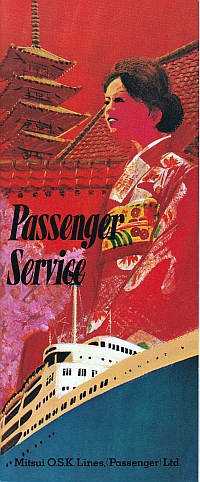
At the end of World War II, 85% of the Japanese merchant fleet had been destroyed. At the same time, there was a growing demand for migrant travel from Japan to South America, specifically Brazil and Argentina. In response, the OSK Line (Osaka Shosen Kaisha) commissioned their Brazil Maru in 1954 and the similar Argentina Maru in 1958 as replacements for their lost ocean liners. They were updated copies of earlier OSK passenger ships of the same names.

As built, the new vessels were primarily intended to carry over 900 migrants in dormitories which were converted to cargo space on the homeward voyage. The only cabin accommodation provided was for about 12 First class and 70 - 80 Tourist class passengers. A third ocean liner, Sakura Maru was designed as a floating trade fair in the off season, joining the others in migrant service at other times.
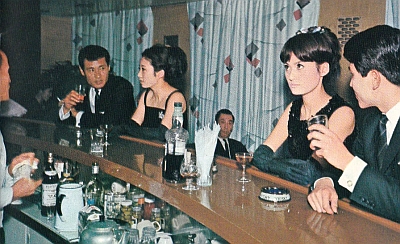
Their normal route was from Kobe and Yokohama to California, through the Panama Canal onward to Colombia and Venezuela, and finally Brazil, Uruguay and Argentina. Each one way voyage took about fifty days, with the three vessels alternating their sailings so that one departed each terminal every one to two months.
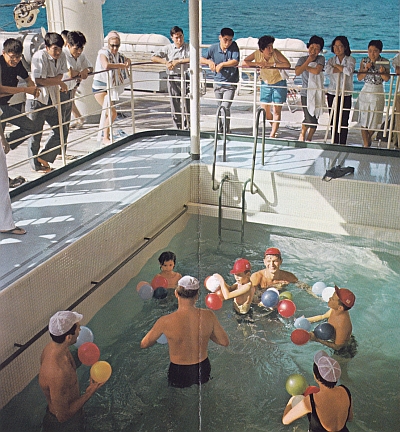
By 1960, the peak in migrant travel had passed as Japan was emerging from the war, and the ships were losing money. To survive, in 1964 the Japanese government required the OSK Line to merge with the Mitsui Line to become Mitsui-OSK Lines. It was determined that Argentina Maru, Brazil Maru and Sakura Maru would be upgraded for the tourist trade. Air-conditioning and a swimming pool were installed and most of the dormitories were converted to four, six and eight berth cabins. Cabin class and economy class each had their own dining room, smoking room and lounge.
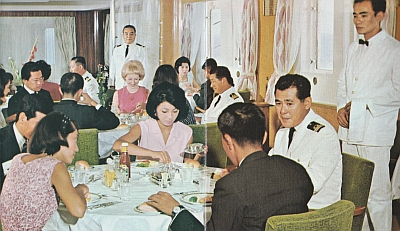
While still not luxurious, the new plan did allow the three ocean liners to compete for leisure cruise passengers against the transpacific services of American President Lines and P&O-Orient Lines, and the Japan to South America route of the Royal Interocean Lines. Finally, between 1971 and 1973 the three Mitsui-OSK Lines ocean liners were sold or converted for other purposes and deployments.
Sample minimum one-way fares from Kobe to Buenos Aires: Cabin class $724; Economy class $600; from Los Angeles to Yokohama: Cabin class $385; Economy class $325; from Los Angeles to Rio de Janeiro: Cabin class $390; Economy class $324; All fares are per person in U.S. dollars.
Go to Mitsui-OSK Lines sailing schedules or select schedules by ship below:
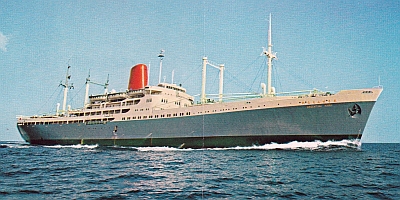 Argentina Maru Built: 1958 by Mitsubishi Dockyard Co, Kobe, Japan Go to sailing schedules for this ship. |
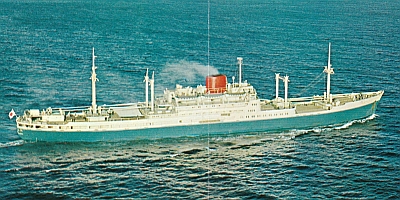 Brazil Maru Built: 1954 by Mitsubishi Dockyard Co, Kobe, Japan Go to sailing schedules for this ship. |
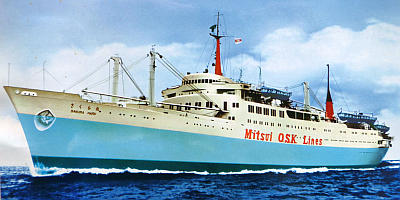 Sakura Maru Built: 1962 by Mitsubishi Dockyard Co, Kobe, Japan Go to sailing schedules for this ship. |